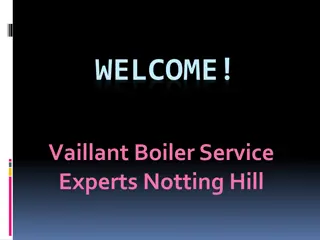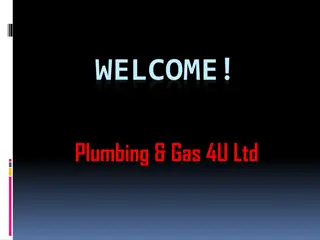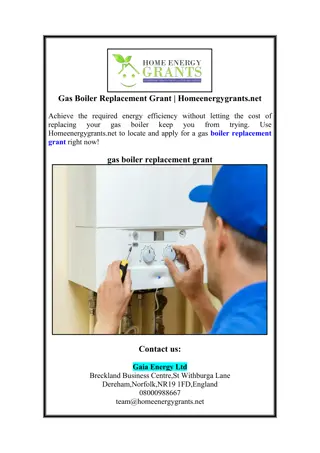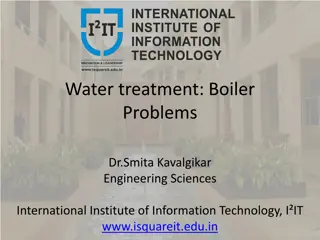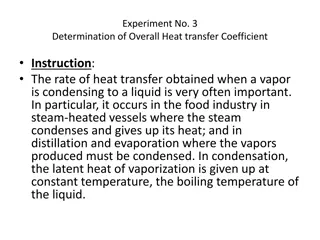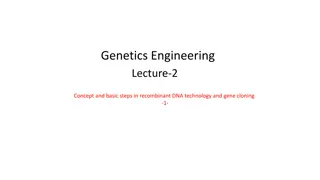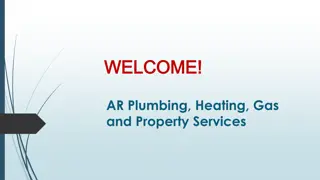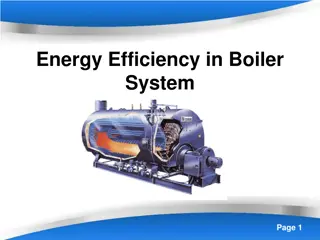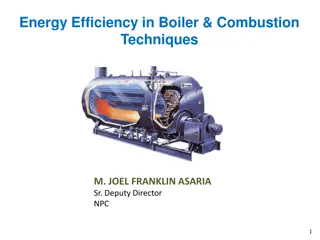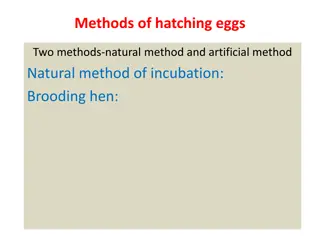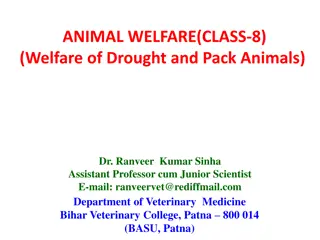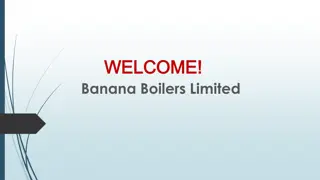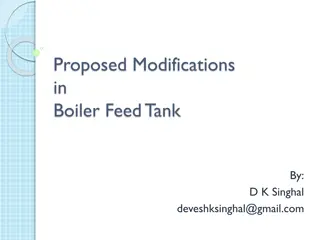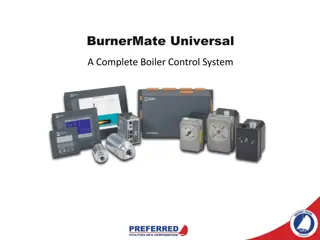Understanding Boiler Draught: Natural vs. Artificial Methods
Boiler draught is the pressure difference that facilitates airflow through a boiler to aid in combustion and heat transfer. Natural draught relies on chimney height and temperature differentials, while artificial draught involves external mechanisms. Both methods play crucial roles in boiler operation and efficiency.
Download Presentation

Please find below an Image/Link to download the presentation.
The content on the website is provided AS IS for your information and personal use only. It may not be sold, licensed, or shared on other websites without obtaining consent from the author. Download presentation by click this link. If you encounter any issues during the download, it is possible that the publisher has removed the file from their server.
E N D
Presentation Transcript
DEFINITION Boiler draught may be defined as the small difference between the pressure of outside air and that of gases within a furnace or chimney at the grate level, which causes flow of air/hot flue gases to take place through boiler. The draught is necessary to force air through the fuel bed/ grate to aid in proper combustion of fuel and to remove the products of combustion i.e. flue gases to the atmosphere after they have given their heat to water being evaporated in boiler.
Draught also provides velocity to flue gases and so increases the heat transfer co-efficient in the boiler. Thus draught is essentially required in a boiler and can be produced by a number of methods.
NATURAL DRAUGHT Natural draught is obtained naturally by the use of a chimney. Chimney is a conical shape vertical tubular steel or masonry or concrete structure having a large height. The flue gases after transferring their heat in the boiler are guided by chimney to a considerable height in the atmosphere. As chimney has a large height and is the only outlet from boiler, it remains filled by hot flue gases.
These exhaust gases, however have given their heat to water in the boiler, are still hotter than the boiler room air. Due to this, the exhaust gases are lighter in weight than outside air and so lifts up naturally in the chimney and finally escape out in the atmosphere from top of the chimney. As the flue gases lift up in the chimney, more gases from fuel bed flow towards chimney to take their place. During this process, boiler and do the job of heating of water and produce steam. they first flow through the
As flue gases flow through boiler and then to chimney, fresh air from outside naturally enters the boiler and help in burning of fuel and production of hot flue gases. So, in this way, a small pressure difference is naturally created between the base of chimney and the air inlet point of boiler because of density difference between hot flue gases inside the chimney and fresh colder air outside. This pressure difference is called natural draught, because it is produced naturally.
ARTIFICIAL DRAUGHT When the draught is produced by some external agency i.e. mechanical fan/blower or by steam jet itself, it is called artificial draught. In modern commercial boilers, more value of draught is required to increase the heat transfer co- efficient and hence the thermal efficiency. So, artificial draught is must to use to overcome the flow resistance offered by large flue passages.
FORCED DRAUGHT It is a positive pressure draught. The fan is installed at the base of the boiler before grate which forces the outside air through fuel bed, furnace and air pre-heater and then flue gases through flue passage, economizer etc. The enclosure for the furnace has to be very tightly sealed so that gases from the furnace do not leak out in the boiler house.
INDUCED DRAUGHT In this system a fan or blower is located at or near the base of the chimney which creates a partial vacuum in the furnace and flue passage. Thus the air and flue gases are drawn through the boiler due to comparatively higher pressure of outside air. It is convenient to produce induced draught and like in forced draught, any type of fan/blower may be used.
BALANCED DRAUGHT It is a combination of forced and induced draught. Forced draught fan overcomes the resistance in air pre-heater and grate. Induced draught fan overcomes draught losses through boiler, economizer and connecting flue passages etc. Depending on the type of fuel burnt and type of boiler, the fan or blower used may be of any type as radial or axial etc.
ADVANTAGES OF MECHANICAL DRAUGHT It is more economical and its control is easy. Desired value of draught can be produced by mechanical means which cannot be produced by means of natural draught. It increases the rate of combustion by which low grade fuel can also be used. It reduces the smoke level and increases the heat transfer co-efficient on increases the thermal efficiency of boiler. It saves the energy and the heat of flue gases can be best utilized by it. flue gases side thus
DISADVANTAGES OF MECHANICAL DRAUGHT Initial costs of mechanical draught system are high. Running cost is also high due to requirement of electricity but that is easily compensated by the savings in fuel consumption. Maintenance cost is also on higher side. Noise level of boiler is also high due to noisy fan/blower etc.
STEAM JET DRAUGHT It is a very simple and easy method of producing artificial draught without the need of an electric motor. Steam under pressure is available in the boiler. When a small portion of steam is passed through a jet or nozzle, pressure energy converts to kinetic energy and steam comes out with a high velocity. This high velocity steam carries, along with it, a large mass of air or flue gases and makes it to flow through boiler.
Steam jet is directed towards a fixed direction and carries all its energy in kinetic form. It creates some vacuum in its surroundings and so attracts the air of flue gases either by carrying along with it. Thus it has the capacity to make flow of the flue gases either by carrying or inducing towards chimney.
FORCED STEAM JET DRAUGHT Steam from the boiler after having been throttled to a gauge pressure of 1.5 to 2 bar is supplied to the jet or nozzles installed in ash pit. The steam emerging out of nozzles with a great velocity drags air along the fuel bed, furnace, flue passage and then to the chimney. Here steam jet is forcing the air and flue gases to flow through boiler hence it is forced steam jet draught.
INDUCED STEAM JET DRAUGHT The jet of steam is diverted into smoke box or chimney. The kinetic head of the steam is high but static head is low i.e. it creates a partial vacuum which draws the air through the grate, ash pit, flues and then to motor box and chimney. This type of arrangement is employed in locomotive boilers. Here steam jet is sucking the flue gases through boiler, so it is Induced Steam Jet Draught.
ADVANTAGES It is quite simple and cheap. It has the capability of using low grade fuels. It occupies very less space. Initial cost is low. Maintenance cost is low. Exhaust steam from steam engine or turbine can be used easily in Steam Jet Draught.
DISADVANTAGES It can operate only when some steam is generated. Draught produced is very low.
DRAUGHT LOSSES Loss due to the frictional resistance offered by flue gas passage to the flow of flue gases. Loss due to bends in gas flow circuit, which also offer flow resistance. Loss due to friction head in grate, economizer, super heater etc. Loss due to flow resistance offered by chimney. Loss due to imparting some velocity to flue gases, which is required to increase heat transfer in boiler and also to throw away the flue gases from chimney.




